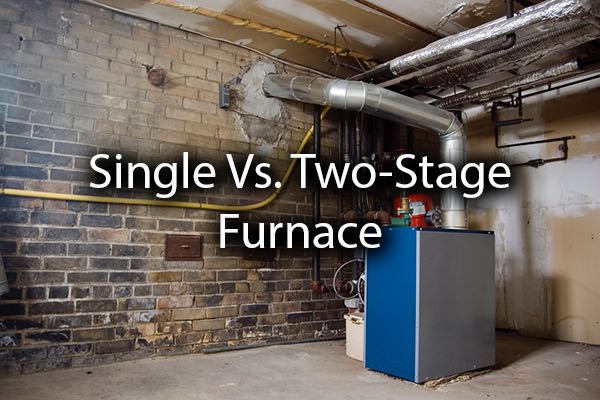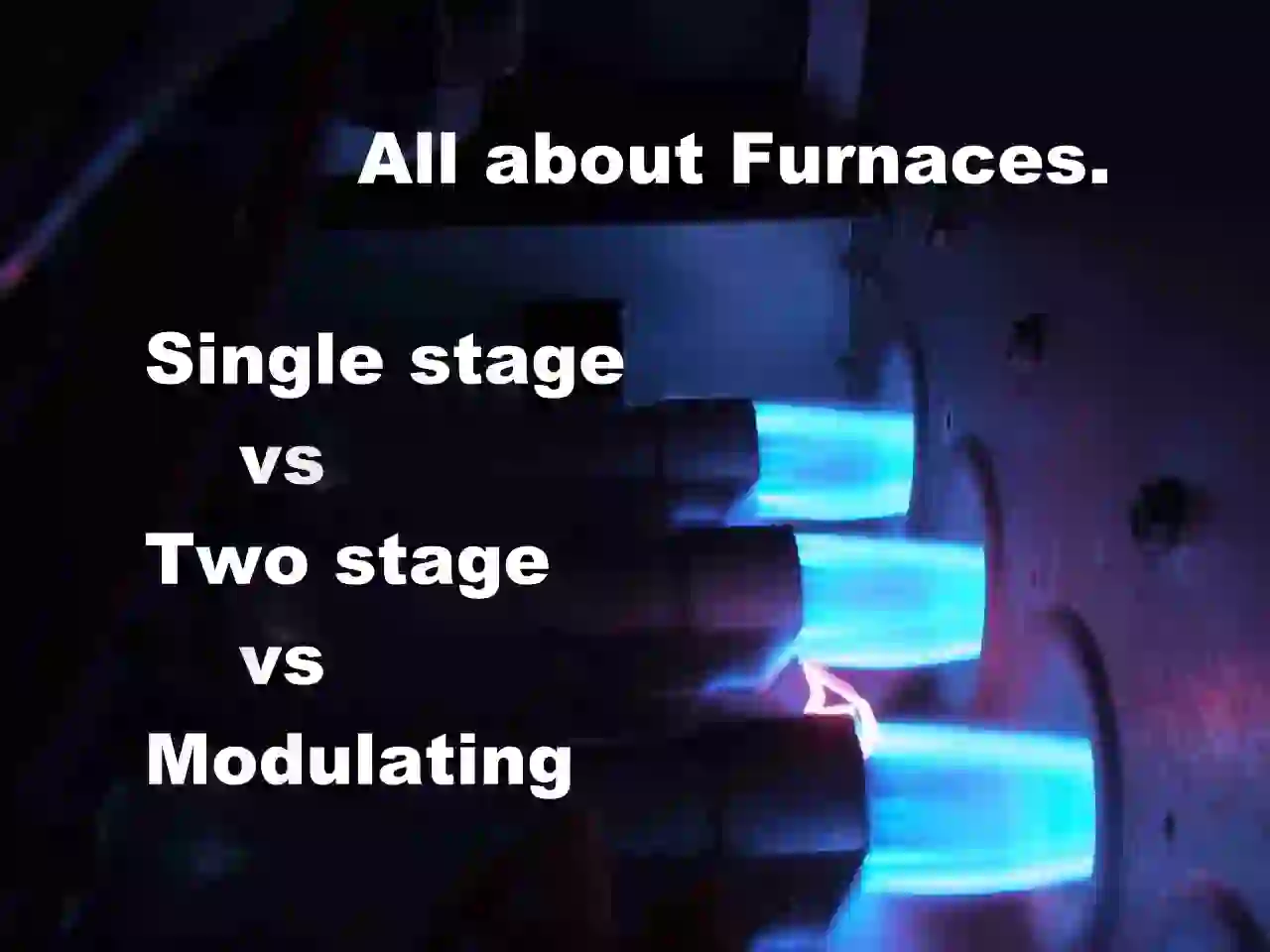Two Stage Furnace Vs Single Stage
Single-Stage vs. Two-Stage Furnaces: Which is Right for Your Home?
Choosing a new furnace can be daunting. Understanding the differences between single-stage and two-stage models is crucial for making an informed decision that optimizes comfort, efficiency, and cost.
Understanding Furnace Stages
A furnace's "stage" refers to its heat output levels. A single-stage furnace operates at only one setting: full blast. A two-stage furnace, on the other hand, has two settings: a lower, more efficient setting for milder weather and a higher setting for colder temperatures. This difference in operation significantly impacts performance and energy consumption.
Single-Stage Furnaces: Simple and Budget-Friendly
Single-stage furnaces are the traditional, more basic option. They've been around for decades and remain a popular choice due to their simplicity and lower upfront cost.
How Single-Stage Furnaces Work
When your thermostat calls for heat, a single-stage furnace ignites and operates at 100% capacity until the desired temperature is reached. It then shuts off completely. This on-off cycling can lead to temperature fluctuations and uneven heating throughout your home.
Pros of Single-Stage Furnaces
- Lower Upfront Cost: Single-stage furnaces are generally less expensive to purchase and install than two-stage models.
- Simpler Design: Their straightforward design makes them easier and potentially cheaper to repair.
- Readily Available: Parts are widely available, and most HVAC technicians are familiar with their operation.
Cons of Single-Stage Furnaces
- Lower Efficiency: Operating at full capacity all the time wastes energy, especially during milder weather.
- Uneven Heating: The on-off cycling results in temperature swings and inconsistent comfort levels.
- Noisier Operation: Starting and stopping at full blast creates noticeable noise.
- Shorter Lifespan: Constant on-off cycling can put more stress on components, potentially shortening the lifespan of the furnace.
AFUE Ratings for Single-Stage Furnaces
AFUE (Annual Fuel Utilization Efficiency) measures a furnace's heating efficiency. Single-stage furnaces typically have AFUE ratings ranging from 80% to 90%. This means that 80% to 90% of the fuel consumed is converted into usable heat, while the rest is lost through the exhaust.
Popular Single-Stage Furnace Brands and Models
Several reputable brands offer reliable single-stage furnaces. Examples include:
- Goodman: Known for affordability and reliability.
- Rheem: Offers a wide range of options with varying features.
- Amana: Provides solid performance and value.
Specific models within these brands vary depending on features and BTU (British Thermal Units) output needed for your home's size and climate.
Two-Stage Furnaces: Enhanced Comfort and Efficiency
Two-stage furnaces offer a more sophisticated approach to heating, providing enhanced comfort and improved energy efficiency.
How Two-Stage Furnaces Work
A two-stage furnace operates at two different heat output levels. During milder weather, it runs primarily on the lower setting (often around 60-70% capacity). This lower setting is sufficient to maintain a consistent temperature without wasting energy. When temperatures drop significantly, the furnace switches to the higher setting to provide the necessary heat.
Pros of Two-Stage Furnaces
- Higher Efficiency: By running on a lower setting most of the time, two-stage furnaces consume less fuel and reduce energy bills.
- More Consistent Comfort: The lower setting provides a more even heat distribution and minimizes temperature fluctuations.
- Quieter Operation: The lower setting operates much quieter than a single-stage furnace.
- Longer Lifespan: Reduced stress on components due to less frequent on-off cycling can extend the furnace's lifespan.
- Improved Air Quality: Longer run times allow for better air filtration, potentially improving indoor air quality.
Cons of Two-Stage Furnaces
- Higher Upfront Cost: Two-stage furnaces are generally more expensive to purchase and install than single-stage models.
- More Complex Design: Their more complex design may require specialized knowledge for repairs.
AFUE Ratings for Two-Stage Furnaces
Two-stage furnaces typically have higher AFUE ratings than single-stage models, often ranging from 90% to 98%. Some high-efficiency condensing furnaces can even reach AFUE ratings above 98%.
Popular Two-Stage Furnace Brands and Models
Many leading HVAC brands offer excellent two-stage furnace options. Here are a few examples:
- Carrier: Known for innovation and high-efficiency models.
- Trane: Offers durable and reliable furnaces with advanced features.
- Lennox: Provides a range of energy-efficient options with smart home integration.
Specific models, such as the Carrier Infinity series or the Trane XV series, are known for their advanced features and high AFUE ratings.
Variable-Speed Blowers: A Key Feature for Two-Stage Furnaces
Many two-stage furnaces are equipped with variable-speed blowers. These blowers can adjust their airflow based on the heating demand, further enhancing comfort and efficiency. A variable-speed blower can circulate air more quietly and consistently, eliminating drafts and hot or cold spots.
The Benefits of Variable-Speed Blowers
- Improved Comfort: Consistent airflow eliminates temperature fluctuations.
- Enhanced Efficiency: Variable-speed blowers use less electricity than single-speed blowers.
- Quieter Operation: Reduced airflow minimizes noise.
- Better Air Filtration: Consistent airflow allows for more effective air filtration.
Pricing Considerations
The cost of a furnace depends on several factors, including the brand, model, BTU output, and installation complexity. Generally, single-stage furnaces are less expensive upfront, but two-stage furnaces can save you money in the long run through lower energy bills.
As a rough estimate, expect to pay between $2,000 and $4,000 for a single-stage furnace installed, and between $3,500 and $6,000 for a two-stage furnace installed. These prices can vary depending on your location and the specific contractor you choose. Obtain multiple quotes from reputable HVAC contractors to ensure you get the best price.
Warranty and Maintenance
Most furnace manufacturers offer warranties on their products. The length and coverage of the warranty can vary depending on the brand and model. Be sure to read the warranty details carefully before making a purchase.
Regular maintenance is essential for keeping your furnace running efficiently and extending its lifespan. Schedule annual maintenance with a qualified HVAC technician to inspect and clean the furnace. This will help prevent problems and ensure optimal performance.
Common Maintenance Tasks Include:
- Inspecting and cleaning the burner
- Checking the flue pipe for leaks or obstructions
- Inspecting the heat exchanger for cracks or corrosion
- Lubricating moving parts
- Checking and adjusting the gas pressure
- Replacing the air filter
Making the Right Choice
Choosing between a single-stage and two-stage furnace depends on your individual needs and priorities. If you're on a tight budget and prioritize upfront cost, a single-stage furnace may be the right choice. However, if you value comfort, efficiency, and long-term savings, a two-stage furnace is generally the better investment.
Consider These Factors:
- Your Budget: How much are you willing to spend on a new furnace?
- Your Climate: How cold does it get in your area?
- Your Home's Insulation: How well insulated is your home?
- Your Comfort Preferences: How important is consistent comfort to you?
- Your Energy Bills: How much are you currently spending on heating?
Consult with a qualified HVAC contractor to assess your specific needs and recommend the best furnace for your home. They can help you calculate the payback period for a two-stage furnace and determine whether it's a worthwhile investment.
Ultimately, the best furnace is the one that meets your needs and provides you with reliable, efficient, and comfortable heating for years to come. Consider brands like Bryant which offer a range of options with varying SEER and HSPF ratings when integrated with heat pump systems.
By understanding the differences between single-stage and two-stage furnaces, you can make an informed decision that will save you money and improve your home's comfort for years to come.










